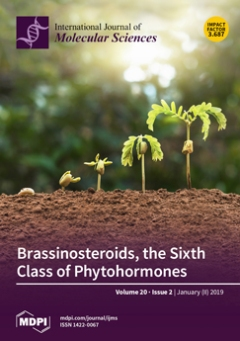Bacteria inhabiting the human gut metabolize microbiota-accessible carbohydrates (MAC) contained in plant fibers and subsequently release metabolic products. Gut bacteria produce hydrogen (H
2), which scavenges the hydroxyl radical (•OH). Because H
2 diffuses within the cell, it is hypothesized that H
[...] Read more.
Bacteria inhabiting the human gut metabolize microbiota-accessible carbohydrates (MAC) contained in plant fibers and subsequently release metabolic products. Gut bacteria produce hydrogen (H
2), which scavenges the hydroxyl radical (•OH). Because H
2 diffuses within the cell, it is hypothesized that H
2 scavenges cytoplasmic •OH (cyto •OH) and suppresses cellular senescence. However, the mechanisms of cyto •OH-induced cellular senescence and the physiological role of gut bacteria-secreted H
2 have not been elucidated. Based on the pyocyanin-stimulated cyto •OH-induced cellular senescence model, the mechanism by which cyto •OH causes cellular senescence was investigated by adding a supersaturated concentration of H
2 into the cell culture medium. Cyto •OH-generated lipid peroxide caused glutathione (GSH) and heme shortage, increased hydrogen peroxide (H
2O
2), and induced cellular senescence via the phosphorylation of ataxia telangiectasia mutated kinase serine 1981 (p-ATM
ser1981)/p53 serine 15 (p-p53
ser15)/p21 and phosphorylation of heme-regulated inhibitor (p-HRI)/phospho-eukaryotic translation initiation factor 2 subunit alpha serine 51 (p-eIF2α)/activating transcription factor 4 (ATF4)/p16 pathways. Further, H
2 suppressed increased H
2O
2 by suppressing cyto •OH-mediated lipid peroxide formation and cellular senescence induction via two pathways. H
2 produced by gut bacteria diffuses throughout the body to scavenge cyto •OH in cells. Therefore, it is highly likely that gut bacteria-produced H
2 is involved in intracellular maintenance of the redox state, thereby suppressing cellular senescence and individual aging. Hence, H
2 produced by intestinal bacteria may be involved in the suppression of aging.
Full article






